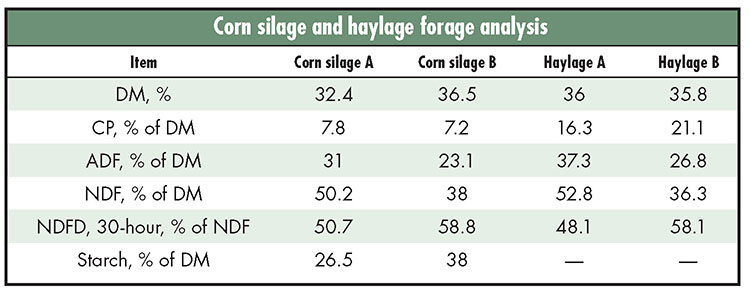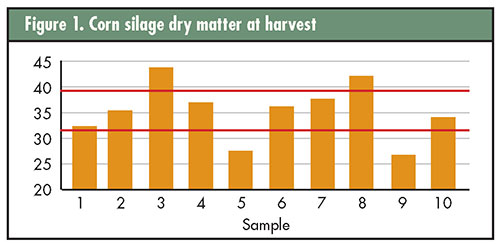
The forage program on your farm is the foundation in developing a successful, efficient, and profitable feeding program. The quality, consistency, and inventory of forages available are key factors that influence economic success. Herds that have these components in place can feed high-forage rations (over 60 percent of total ration dry matter) and still obtain lofty levels of milk production (over 85 pounds per cow per day).
These rations take advantage of your forages, lower purchased feed costs, and improve profitability. Many herds are feeding higher levels of forage in rations today than they were 20 years ago and getting more milk production. This is the result of improved forage hybrids and varieties, better forage management, and the realization that cows can produce high levels of milk from forage-based rations.
Putting it together
What is needed to put a forage
program together?
The keys are setting goals, developing an implementation plan, planning for forage storage and allocation, and assessing the results.
Set goals: What forage quality are you targeting? Mary Beth Hall from the U.S. Dairy Forage Research Center has coined the phrase “right quality.” This implies that the desired forage quality will vary depending on the animal group that will be fed the forage. The “right” neutral detergent fiber (NDF) level in alfalfa for high-producing cows may not be the “right” NDF level if fed to late-lactation cows and bred heifers.
Implement a plan: What harvest maturity is needed to achieve the forage quality goals? Do you have a plan for monitoring maturity and timing of harvest?
Store and allocate by quality: Do you store forages by quality at the time of harvest? If this can be done, it provides the flexibility to feed the “right” forage to specific animal groups. The table contains data on the quality of forages in four bunker silos on the same farm. Corn silage B and Haylage B would fit well for early lactation and high-producing cows. Corn silage A and Haylage A better match the needs of late-lactation cows and bred heifers.

The values for these forages are from samples taken at the time of harvest. By sampling forages at harvest, you can develop plans to feed these to the appropriate animal groups. Most forages can be the “right” quality if fed to the right animal group.

Assess your results: Did you meet your goals? Are changes needed in your forage harvest strategy for next year?
There are several ways to do this. One is to use a chart that compares harvest results with the goals that were set. Figure 1 contains dry matter for corn silage taken at harvest and stored in a bunker silo. Each sample represents a different field. Figure 2 is legume haylage NDF at harvest. The red lines are the goal lines set by the dairy producer.
There are four out of the 10 samples in Figure 1 that are outside of the goal range. Since these are individual field samples, one option would have been to use whole-plant dry matter samples prior to harvest and use these results to better stage the order that fields were harvested. This should place more samples within the goal range.

In Figure 2, there are six out of 10 samples outside of the range for NDF. It is possible that some of these samples are related to weather impacting the harvest process. Another option would be to use approaches such as growing degree days, Predictive Equations for Alfalfa Quality (PEAQ), scissors cutting, or alfalfa plant height to better determine time of harvest to get more samples within the desired NDF range.
Set your 2019 goals
As you plan for the 2019 harvest season, get your team together and develop both harvest management goals and a harvest plan to achieve these goals.
Determine practices that can be used to assess the proper harvest time. These might include whole-plant dry matter for corn silage and methods listed above to estimate NDF in legume and grass forages. Taking forage samples at harvest is an excellent way to assess quality and compare with your goals. This also provides information that can be used to better meet nutrient needs with the “right” forage quality.
This article appeared in the March 2019 issue of Hay & Forage Grower on pages 20 and 21.
Not a subscriber? Click to get the print magazine.

